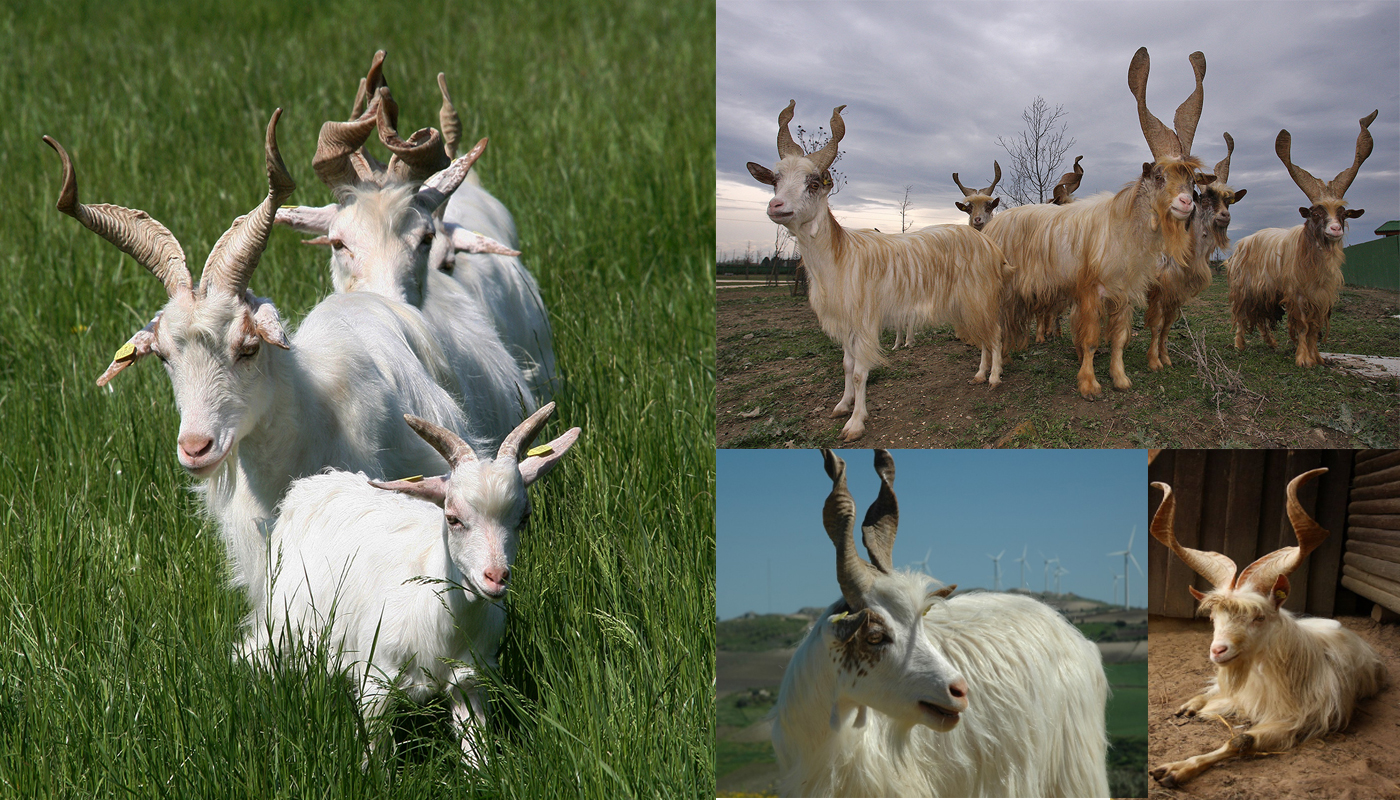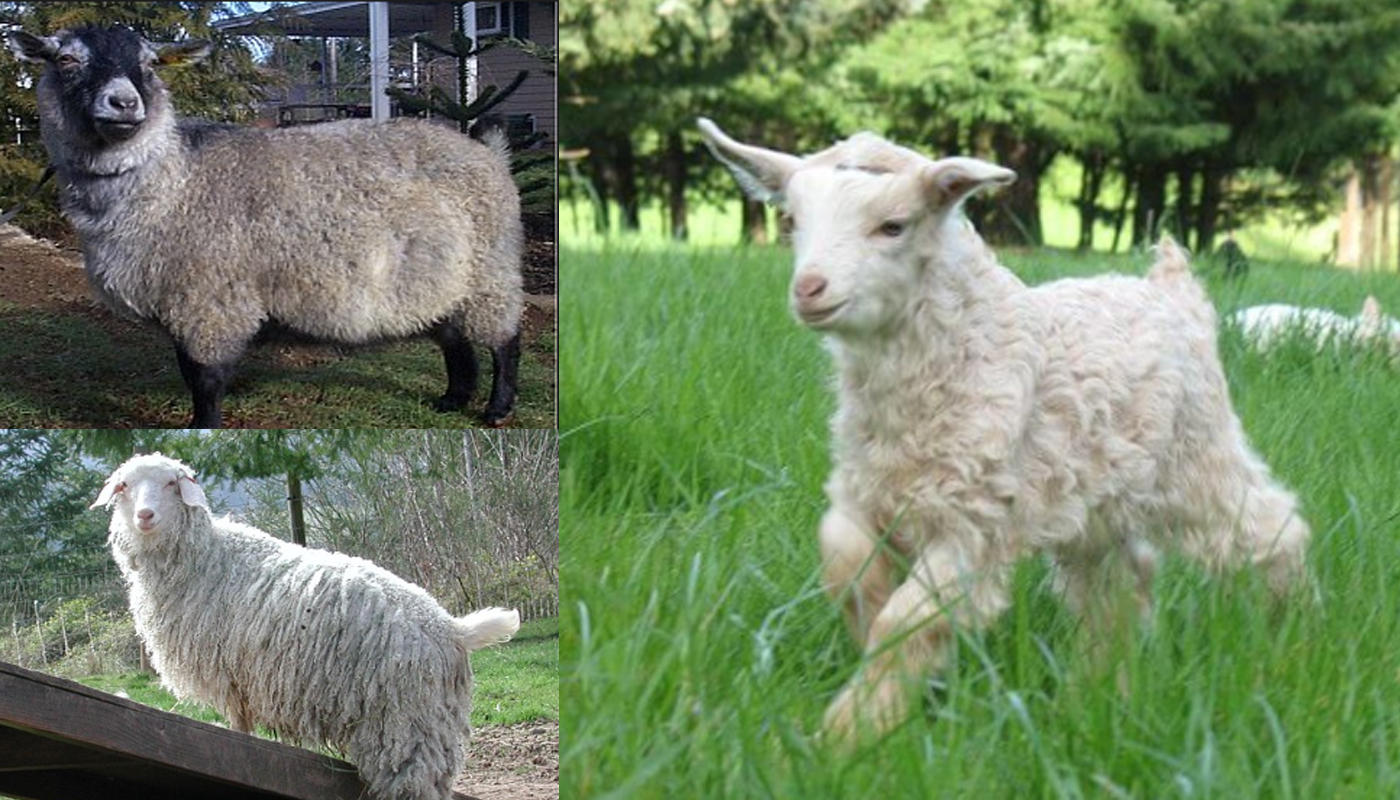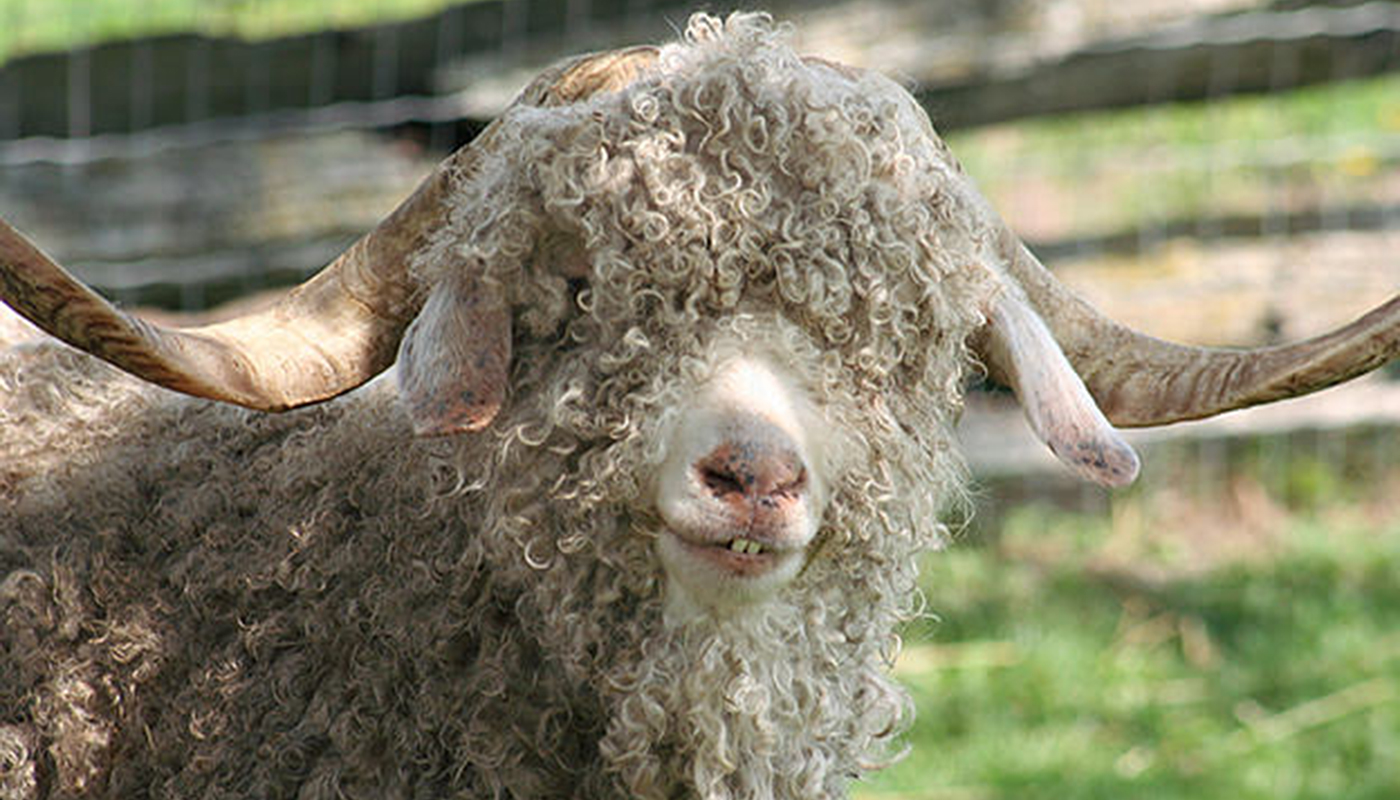
Powerfully muscular and large with horns that lie flat and curl around the back of their heads make them a magnificent goat to see.
They stature is much like that of the Boerboel dog breed with their thick bodies, shorter legs and muscular thighs.
Their successful meat production has made them a sough after goat throughout America, Australia and Brazil. They mature really fast and have a good meat to bone ratio making them ideal for commercial farming industry.
Kalahari Goat Quick Profile Overview
| The Kalahari Goat breed is powerful, muscular and very strong. They are also very hardy and can survive in Saharan an sub-Saharan environments | |
| Country of Origin: | South Africa |
| Other Names: | Kalahari Red |
| Breed Size: | Large |
| You may Also Like: | Top 12 Large to Largest Goat Breeds |
| Main Purpose: | Meat |
| Can be used for | Breeding, Meat |
| You may Also Like: | 10 Best Goat Breeds for Meat Production |
| Temperament: | Vivacious, robust and can be territorial at times |
| Good with Kids? | They are quite large and not suited to be around children, although there is always the exception to the rule. |
| You may Also Like: | 10 Best Goat Breeds to Keep as Pet |
| Ideal Environment: | They can adapt to any environment are used to the arid landscapes of South Africa and the bushveld. | Ideal Climate: | The can withstand most climates |
| Conservation Status: |
Not Listed by the *ALC Common |
| Health Issues? | No known health issues |
| Good Starter Goat? | No, they are more for the establish meat or dairy goat farmer |
| Goat Associations: | There are no actual American Associations but the Canadian Meat Goat Association and the American Goat federation, both of which websites links can be found under the “Useful Links” section of this article. These sites are the best bet for finding any registered breeders in the USA. |
| Goat Clubs: | There are no known goat clubs |
| Note: *ALC stands for American Livestock Conservancy | |
PHYSICAL CHARACTERISTICS
| This powerful goat breed has a well-developed body, short legs with powerful thighs, a round face with a Roman nose and short shiny coat in a color that allows for ample camouflage from predators to protect the young kids. | ||
| Color(s): | Deep rich rid Both sexes have the exact same coat color |
|
| Goat⇒ | Doe | buck |
| Breed Weight: | 75 kg’s | 115 kg’s |
| Breed Height: | 50 cm at withers | 60 cm at withers |
| Hair: | Short and glossy | Short and glossy |
| Ears: | Short and floppy | Short and floppy |
| Horns: | Short and protrude backwards from the head | Short but longer than the does, protrude directly form the head to point backwards with a slight curve |
| Matures at age: | 5 to 15 months | 3 to 15 months |
| Puberty Age: | 4 to 10 months | 4 to 9 months |
| Breeding Age: | 18 months | 1 year |
| Breeding Traits: | 1 Breeding cycle | Cover 20 to 30 does in 1 season |
DOE BREEDING & MILKING INFORMATION
| They are bred for the meat and sometimes the use of the very strong pelts. They are not known as a milking breed and therefor it is quite difficult to milk them. The does only have 1 breeding cycle per year. | |
| Breeding Period/cycle: | Usually lasts 12 to 36 hours Ave. 21 days/18 to 24 days |
| Gestation Period: | Usually around 148 to 155 day but most are 150 days |
| Kids: | 1 to 3 kids per litter |
| Good Mothers? | Yes, they take their mothering duties very seriously |
| Lactation Period: | Usually around 250 to 284 days. Most common is 284 days |
| Milk Quality: | For the kid it is very nutritious and there is just enough to feed her family |
| Milking Level: | They are not built for milking |
| You may Also Like: | Top 10 Best Dairy Goat Breeds |
GOAT MEAT PRODUCTION INFORMATION
| The Kalahari goat was specifically design for superior quality meat and kids that mature quickly enough for commercial farming | |
| Quality? | Excellent |
| Req. Maturity Weight: | 55 to 110 lbs. |
| You may Also Like: | 10 Best Goat Breeds for Meat Production |
GOOD TO KNOW
| A few more pointers about the Kalahari Goat | |
| Where to buy them: | As they are not readily advertised it is best to check with one of the American goats’ associations such as the American Boer Goat Association, American Goat Society and the American Goat Federation. All links available at the end of this article.. |
| Agility: | For such a big muscular animal they are deceptively nimble and agile. |
| Interact with other animals: | They do not mind interacting with other livestock, poultry and birds include Ostriches. |
GENERAL INFORMATION:
The Kalahari goat has a red coat to blend in with the arid dessert conditions of the open plains of South Africa.
They can withstand arid conditions are excellent foragers that are able to find food in the worst of conditions.
They are commonly used to mix breed with other popular meat goats to increase the meats quality and carcass size of various other breeds.
They have an incredibly good immune system against most common disease and are resistant to most parasites making them really valuable in areas rife with both.
This also means that the animals need less expensive vaccination inoculations than other goat breeds.
The kids of the Kalahari red are fast growers reaching maturity weight quite rapidly which makes them ideal for commercial goat meat farming.
They are not really listed as a leather producing goat, but they do have very fine pelts for use in some leather products
HISTORY
The Kalahari Red goat originates from South Africa the land of the inspired farmer who are well known for producing top class animals for production.
In the early 1970’s farmers collected red goats from various provinces and the bordering countries of South Africa. A Ben Voster who came from Tshipese in the Limpopo Province and farmed just north of the Soutpansberg on land that mainly consisted of Mopanie and other indigenous South African shrubs and trees.
His herd consisted of a Boer goat stud and 200 does. One season his one doe gave birth to one red kid goat every year and once it got to maturity, he was immediately struck by the red goats unique qualities. It was then that he decided to develop those qualities and so he started to ask other farmers from all over the country for red colored goats. He initially started with 30 red goats to start breeding with.
After much breeding and communication with various breeders Ben Vosters new red goats were shown with Savanna goats in Bloemfontein in 1998. After a lot of genetic testing and breed modifications the Kalahari Reds had 79 registered stud farms as of 2012.
VIDEO
USEFUL LINKS
- American Goat Society(AGS)
- American Goat Federation (AGF)
- American Dairy Goat Association (ADGA)
- American Cashmere Goat Association (ACGA)
- Canadian Meat Goat Association (CMGA)
- Canadian Goat Society (CGS)
- Animal Shelter (ASPCA)
- American Veterinary Medical Association
- American Poultry Association
- American Animal Welfare Society
- American Animal Control
- American Animal Husbandry Society
 Girgentana Goat Breed – Everything You Need to Know
Girgentana Goat Breed – Everything You Need to Know Thuringian Goat Breed – Everything You Need to Know
Thuringian Goat Breed – Everything You Need to Know Appenzell Goat Breed – Everything You Need to Know
Appenzell Goat Breed – Everything You Need to Know American Lamancha Goat Breed – Everything You Need to Know
American Lamancha Goat Breed – Everything You Need to Know Sahelian Goat Breed – Everything You Need to Know
Sahelian Goat Breed – Everything You Need to Know Pygora Goat Breed – Everything You Need to Know
Pygora Goat Breed – Everything You Need to Know Pygmy Goat Breed – Everything You Need to Know
Pygmy Goat Breed – Everything You Need to Know 10 Best Goat Breeds for Fiber Production
10 Best Goat Breeds for Fiber Production Top 10 Best Dairy Goat Breeds
Top 10 Best Dairy Goat Breeds Chamois Goat Breed – Everything You Need to Know
Chamois Goat Breed – Everything You Need to Know Booted Goat Breed – Everything You Need to Know
Booted Goat Breed – Everything You Need to Know Jonica Goat Breed – Everything You Need to Know
Jonica Goat Breed – Everything You Need to Know